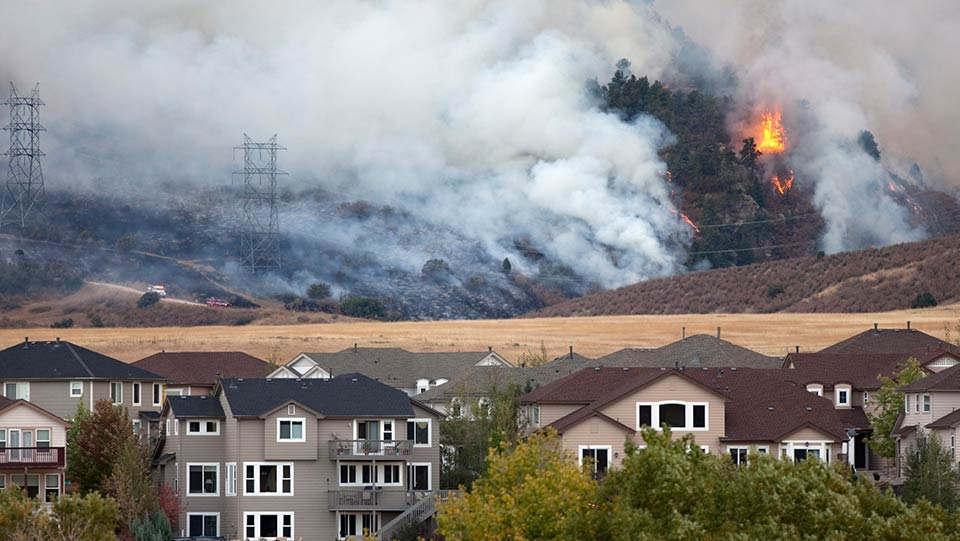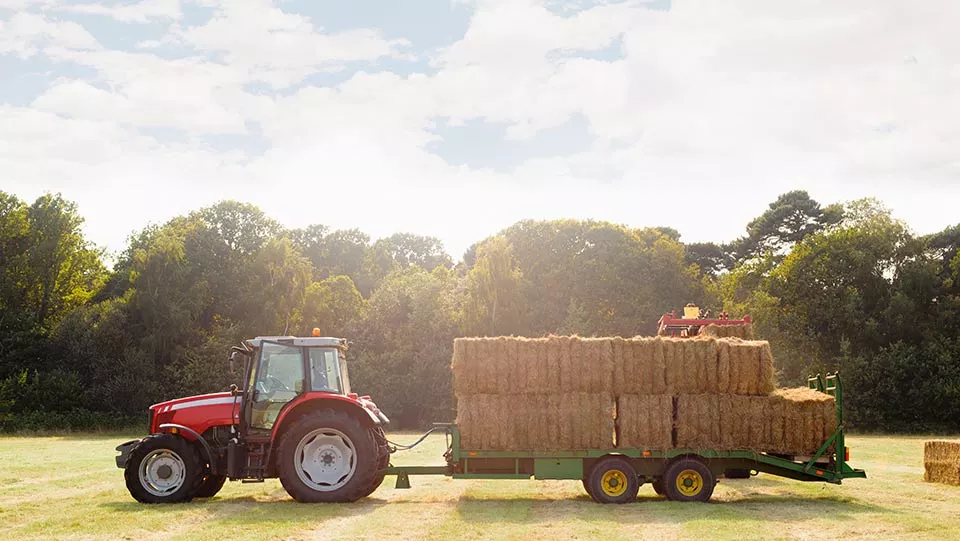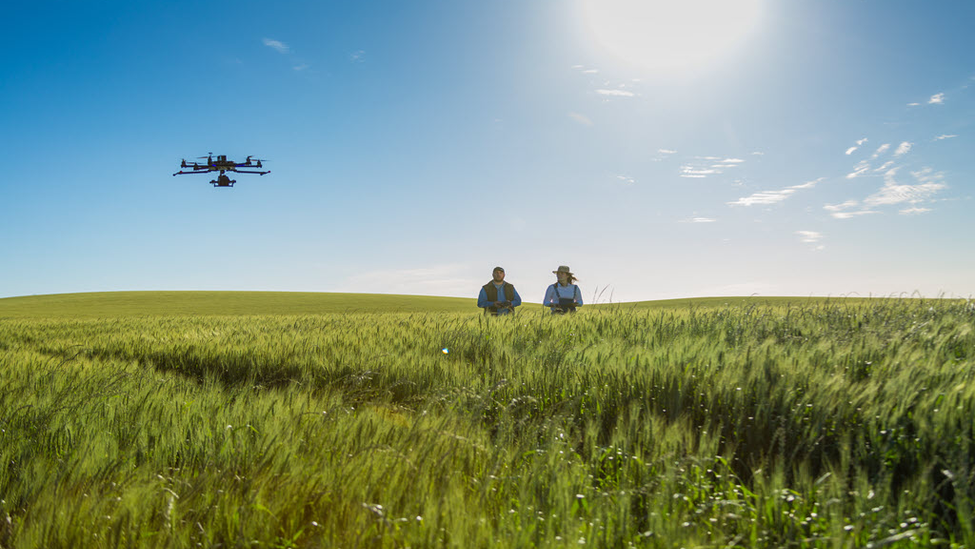Wildfires: Before and After, How to Help Protect Your Agribusiness


Wildfires in the U.S. burn millions of acres a year, devastating farms, ranches and livestock. Triggered by extreme weather, such as high temperatures and drought, wildfire “season” has been growing longer, bringing more fire activity and potential loss.1 That’s certainly good reason to do all you can to avoid the destruction that could come.
“Before wildfire season approaches, agribusinesses should take steps to protect the property they’ve worked hard to build,” said Scott Humphrey, a Travelers Risk Control professional. “Clearing away vegetation and creating open space around structures to defend against a fire can help protect buildings, crops and livestock.” Here’s guidance from Travelers Risk Control on some things you can do to be better prepared:
Reduce your risk from wildfire
Well before a wildfire is in the area:
- Create defensible space around your building. The area around the perimeter of your buildings can serve as a defensible space in the event of a wildfire.2 Check with your local fire department for any specific local ordinances.
- Zone 1: The noncombustible zone – Remove combustible materials, mulch, foliage and landscaping from within 5 feet of the building.
- Zone 2: 5-30 feet from the building or to the property line – Remove all dead plants, grass and weeds, along with dead or dry leaves. Trees outside of the 5-foot noncombustible zone that have branches overhanging the roof should be trimmed back or removed. Trim trees regularly to keep branches a minimum of 10 feet from other trees. Move wood piles out of this zone.
- Zone 3: 30-100 feet from the building or to the property line – In the 100-foot zone, cut or mow grass to a maximum height of 4 inches, and remove fallen leaves, needles, twigs, bark, cones and small branches. Trees should be thinned or removed so as not to form a continuous path of vegetation to the building.
- “Harden” your structure against fire. When building new or remodeling, consider using noncombustible and ignition-resistant materials on the exterior of buildings. This can help to limit ignitions from radiant heat and/or burning “brands” – the chunks of burning material that can be driven by winds ahead of the wildfire. Barrier curtain shutters over windows can help protect against fire intrusion through windows. Provide steel screen mesh, not exceeding 1/8-inch in size, to cover any vents that cannot be closed off.
- Develop a checklist. Develop a checklist to use to ensure all exterior windows, doors, vents, etc. are inspected and closed.
- Create a business continuity plan. Consider alternative arrangements for continuing critical operations.
- Practice your evacuation plan. Consider where employees should go and instruct them on what they should bring with them. Plan several escape routes in the event that roads are blocked.
Be cautious about exterior building wildfire protection systems
Creating defensible space around buildings and home hardening are the most effective ways to protect property. Be wary of other seemingly “easy solutions,” such as installing or applying wildfire suppression systems using foam, gel or water to protect structures. These have many limitations that must be fully evaluated to determine if they are worth the investment.
Exterior sprinkler systems must be arranged to wet the roof and all exterior surfaces and be activated before any embers arrive. Some considerations include whether you would need to be on-site to turn it on. Also, the system will require large volumes of water to be pumped over an extended period. Will you have an adequate water supply? Will the pump and its electrical power or fuel be reliable during the fire?
Spray-on gels or foams may lose their effectiveness as they dry. Applying will take time and, if applied too soon, the material may not be effective when the wildfire reaches the property. Therefore, timing is critical, and this may endanger you by not allowing enough time for evacuation.
During a fire watch
- Remove any vegetative debris that may have collected on roofs and in gutters. This debris could be ignited by flying embers or burning branches.
- Follow your checklist to ensure all exterior windows, doors, vents, etc. are properly sealed or closed.
- Follow disaster plan/emergency shutdown practices. These should include equipment, machines, HVAC and other building systems.
After the fire
- Leave certain tasks to the professionals. Some operations, such as utility restoration and cleaning up spills of hazardous materials, should only be conducted by properly trained workers.
- Be aware of post-fire hazards. Workers involved in cleanup operations should be equipped with proper Personal Protective Equipment (PPE), e.g., boots, gloves, mask. Also, be aware of unsafe structures and electrical hazards.
- Initiate business contingency plan. This might include moving and securing alternative storage for crops or stock, the transportation and sheltering of livestock while your facilities are under repair, and arrangements with other facilities in order to continue necessary operations.
- Look for any salvage opportunities. Crops or stock may be damaged, but not a total loss. Consider if there’s any salvage value associated with damaged items.
Long before wildfire season, it’s a good idea to understand the details of your insurance coverage, including your policy’s extra expense limits for additional costs you might have after a fire. Other expenses to consider may include renting new equipment, hiring temporary workers and exposure mitigation activities before and during the threat of a fire.



